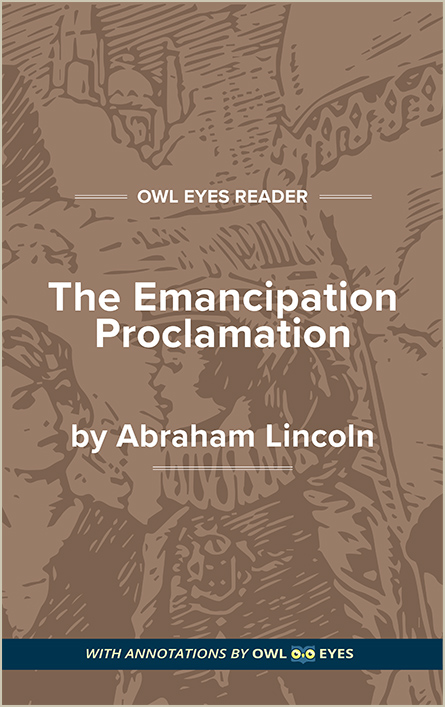Analysis Pages
Historical Context in The Emancipation Proclamation
American Slavery: Slavery in the United States began in the 17th century during the early colonization of North America. British and French colonists found labor difficult to procure. Their solution was to draw from the transatlantic slave trade, a trade triangle operated by European empires of Portugal, Britain, France, Spain, and the Netherlands. The triangle extended from Europe to West Africa, where slaves were captured, to the New World colonies, where slaves labored on plantations, and back to Europe. Slaves became a significant part of the economy of the early American colonies, from Louisiana to New England. By the end of the American Revolution, slavery had been abolished in the North. However, the southern states, with their cotton-driven economy, continued to rely on slave labor, a fact which fueled growing contention between the North and South.
The Civil War: Throughout the 1850s, tensions grew between the Northern and Southern states. There were two primary sources of tension. First, slavery was a point of profound disagreement. The North had eradicated slavery and forged an economy founded on free labor. The South remained dependent on cotton, a crop that could be more cheaply produced with the use of slaves. The second source of tension was the issue of states’ rights. While the Northern states generally favored a strong, centralized government, the Southern states desired a high level of autonomy and self-governance for each state. The Southern states wanted the freedom to determine their own laws and regulations, particularly in regard to the questions of slavery. As tensions over the interrelated issues of slavery and states’ rights increased, the Southern states began plotting to secede from the United States. In 1860, war broke out between the secessionists—known as the Confederacy—and the remaining Union, comprised of the northern states.
Lincoln’s Efforts at Emancipation: Abraham Lincoln pushed for the emancipation of slaves from the beginning of his presidency. The first decisive step toward that aim was the Confiscation Act of 1861, a wartime law which allowed Union troops to seize slaves from their masters. Additional legislation in March of 1862 officially protected any seized slaves from being returned to their masters. Another law, passed in July of 1862, granted full freedom to those slaves. During that same July, Lincoln began preparing the Emancipation Proclamation, which he delivered in its preliminary form in September 22nd, 1862, just after the Union victory at the Battle of Antietam. The initial version of the speech describes Lincoln’s plans to free the slaves in an address on January 1st, 1863. The final Emancipation Proclamation is that very address.
Historical Context Examples in The Emancipation Proclamation:
Text of Lincoln's Proclamation
🔒"I invoke the considerate judgment of mankind and the gracious favor of Almighty God...." See in text (Text of Lincoln's Proclamation)
"such persons of suitable condition will be received into the armed service of the United States..." See in text (Text of Lincoln's Proclamation)
"And I hereby enjoin upon the people so declared to be free to abstain from all violence..." See in text (Text of Lincoln's Proclamation)
"all persons held as slaves within said designated States and parts of States are, and henceforward shall be, free;..." See in text (Text of Lincoln's Proclamation)
"Arkansas, Texas, Louisiana..." See in text (Text of Lincoln's Proclamation)
"And by virtue of the power and for the purpose aforesaid,..." See in text (Text of Lincoln's Proclamation)
"by virtue of the power in me vested as Commander-In-Chief of the Army and Navy of the United States in time of actual armed rebellion against the authority and government of the United States..." See in text (Text of Lincoln's Proclamation)
"by proclamation..." See in text (Text of Lincoln's Proclamation)
""That the executive will on the 1st day of January aforesaid..." See in text (Text of Lincoln's Proclamation)
""That on the 1st day of January, A.D. 1863, all persons held as slaves within any State..." See in text (Text of Lincoln's Proclamation)
"Whereas on the 22nd day of September..." See in text (Text of Lincoln's Proclamation)
"will recognize and maintain the freedom of said persons...." See in text (Text of Lincoln's Proclamation)
"a proclamation..." See in text (Text of Lincoln's Proclamation)

